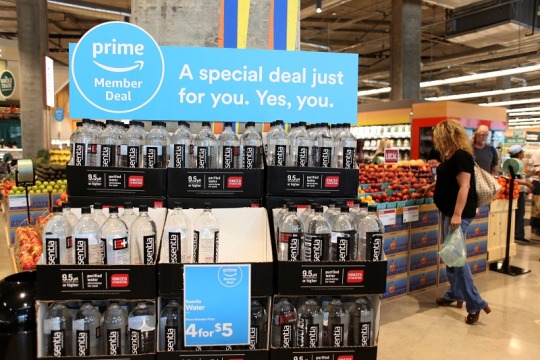
Amazon’s grocery ambitions have been a major talking
point within the industry since the e-Commerce
giant acquired Whole Foods two years ago. Most recently, there were
reports in March 2019 that the company was planning
dozens of its own branded U.S. grocery stores,
beginning in Los Angeles. Although Amazon never officially confirmed these
plans, a recent New York Times report provided insight into the
experience these stores would potentially deliver to the consumer. Shoppers
could order nonperishable items with an app, and while they shopped for fresh
food, the other products would be brought down in time for checkout. The store also
would include an area to pick up groceries ordered online and to manage
packages for delivery drivers.
The RTP team discusses the feasibility of the
proposed model, and whether Amazon can build out a significant grocery growth
strategy through these mixed-format stores.
Adam Blair, Editor: I read with interest the New York Times report on Amazon’s original
plans for grocery retail, developed prior to its industry-shaking acquisition
of Whole Foods in July 2017. As is Amazon’s practice,
executives write the final press release first and then reverse-engineer the
project to (hopefully) deliver the desired result. Amazon imagined a mixed-use
grocery store with “robust produce, fresh food and prepared meals sections.”
Non-perishable items (paper goods, canned foods, cleaning products) would be
kept in an area not open to customers; these could be ordered via an app,
selected by store associates and brought to the customer by the time they
completed their fresh foods shopping journey. There also would be pickup areas
for online orders and a section to manage packages for delivery drivers. Well,
if I were creating a supermarket from the ground up, this does sound like an
efficient model. The problem is that real-world consumers have been trained to
do their grocery shopping at stores that make all their products accessible.
Another issue: traditional supermarkets make their highest margins in the
so-called “perimeter departments” (deli, meat, seafood, floral, etc.). The
theory is that customers come in for the paper towels and milk, but they also
are tempted to splurge on a succulent salmon filet. If shoppers only needed to
buy non-perishable necessities one week, why would they bother coming into the
store at all? I’d never underestimate Amazon’s ability to change shoppers’
habits, but it doesn’t surprise me that Amazon went the acquisition route
rather than trying to reinvent the supermarket wheel in this fashion.
Glenn Taylor, Senior Editor: If Amazon’s grocery
ideas can get off the ground, as always it would be a good thing for consumers —
if their produce and food is of high quality and their prices are low. But I
can see this scenario playing out where Amazon opens only a few dozen stores
across the U.S. One reason: the sheer growth of companies like Dollar
General, which already sells the items Amazon would be keeping away from
the consumer (namely non-perishables) at a low price. There’s a place for
Amazon’s model somewhere, but by continuing to limit its store presence to
cities (like most of its stores under the Go, Books and 4-star
labels), Amazon gives the appearance of a retailer that only really wants
to cater to on-the-go passersby or local shoppers who really don’t have time to
shop. That’s fine if they want to achieve their continued goal of collecting
shopper data, but you’re not always guaranteed to retain any of these shoppers
if there are other food options in the vicinity. If the mobile order-ahead
process turns out well, I think other grocers can stand to learn from it and
implement their own version of the tech. When it comes down to it, it never
hurts to innovate and try new shopping models when you have the pool of money
Amazon does, but I don’t see a reason for grocers to really fret about this.
Bryan Wassel, Associate Editor: As someone who was
covering the supermarket industry when Amazon purchased Whole Foods (and had
been following the rumors for months before it actually happened), I have to be
skeptical of these plans for a completely new format. The runup and immediate
aftermath of that deal was full of big talk, also from anonymous sources, about
how Amazon was about to turn the whole industry upside-down with its immense
might. The actual result? Prices on a select few items dropped slightly. This
was shortly after Lidl made landfall in the U.S., which caused a similar
panic — this one about how domestic supermarkets couldn’t possibly compete with
the brutally efficient practices of a true German discounter — that fizzled out
in a similarly unremarkable manner. American-style grocery shopping isn’t the
only way this industry can be run, as anyone who has ever traveled abroad can
attest, but our habits are largely ossified. If anything can break the paradigm
it’s Amazon, but it will be slow changes effected over years, not an immediate
disruption of the dozens of supermarket chains across the country.






